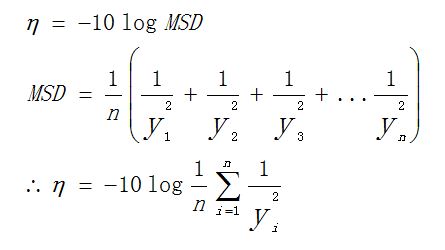All entries for Wednesday 05 December 2018
December 05, 2018
Using Taguchi Methods for Helicopter Improvement
During the Process Improvement by Using Six Sigma module. one of the exercises was Helicopter Experiment by using Taguchi Methods.
To be honest, the Taguchi Methods was a little hard to understand at first, only watching the presentation. I didn't understand what the methods are used for. However, after the helicopter exercise, I knew the whole process of improving the helicopter. So I want to record the steps to review later.
Here come the steps:
1. Identify the factors which will affect the flying time of helicopter according to an original design by brainstorming.
2. Determine the range of the variable of each factor. Each factor has two different types.
3. Make 8 helicopters according to the decision. The sheet is based on the Taguchi Methods of 8 Run Number.

4. Test and measure the landing time of each helicopter. There are two results for each plane, one is "wing up", the other is "wing down".
The above steps are the process of testing and collecting data, followed by analysing the data.
5. Calculate the S/N ratio, in this exercise, we used the " larger is better" one. And the formula of this step is:

In the above picture, "y" stands for the two results of each plane. We calculated all the "η" at this step.
6. Calculate the average of each factor, such as A1, A2, B1, B2... G1, G2. These averages are based on the S/N ratio of the previous step, and the sum of the time of each of the four aircraft with the same factor is divided by four. And then the two averages of the same factor are subtracted to get a "Δ".
7. Analyse the main factors according to the "Δ". If Δ<1. we can say this control factor has little effect on the flying time so we can get rid of this factor. So that we can determine the main factors which will affect helicopters' flying time.
8. Analyse the data involving interactions of two factors. Here need a graph to draw two factors together, and if the two line are not in parallel, it means the two factors have interactions between them.
9. Calculate the expectation η of the improved helicopter. The expectation η = "average of η" + (average of the positive factor of A - the average of η)+... +(average of the positive factor of G - the average of η). The result of the average of η ±10% is the range of the improved helicopter should be.
10. Make a new helicopter with all the factors which will help with the result and test it again. Compare if the time locates in the range. If it does, the helicopter is successful. The final value of η can measure the quality of a helicopter.
Although this experiment looks like a game, the method it uses can be extended to the actual optimization application. Because of this exercise, I have deepened my understanding of the Taguchi Methods and learned how to apply it to practice. I think this is really a meaningful exercise.
 Ricky Ni
Ricky Ni

 Please wait - comments are loading
Please wait - comments are loading
 Loading…
Loading…